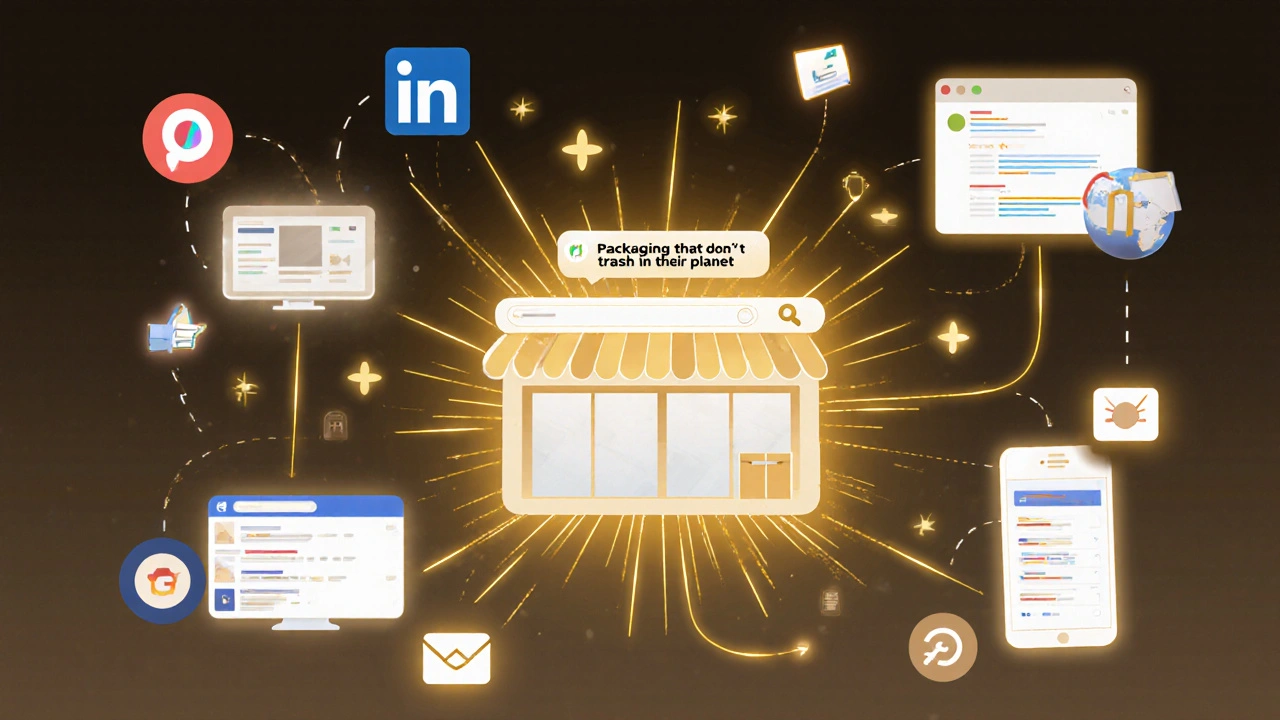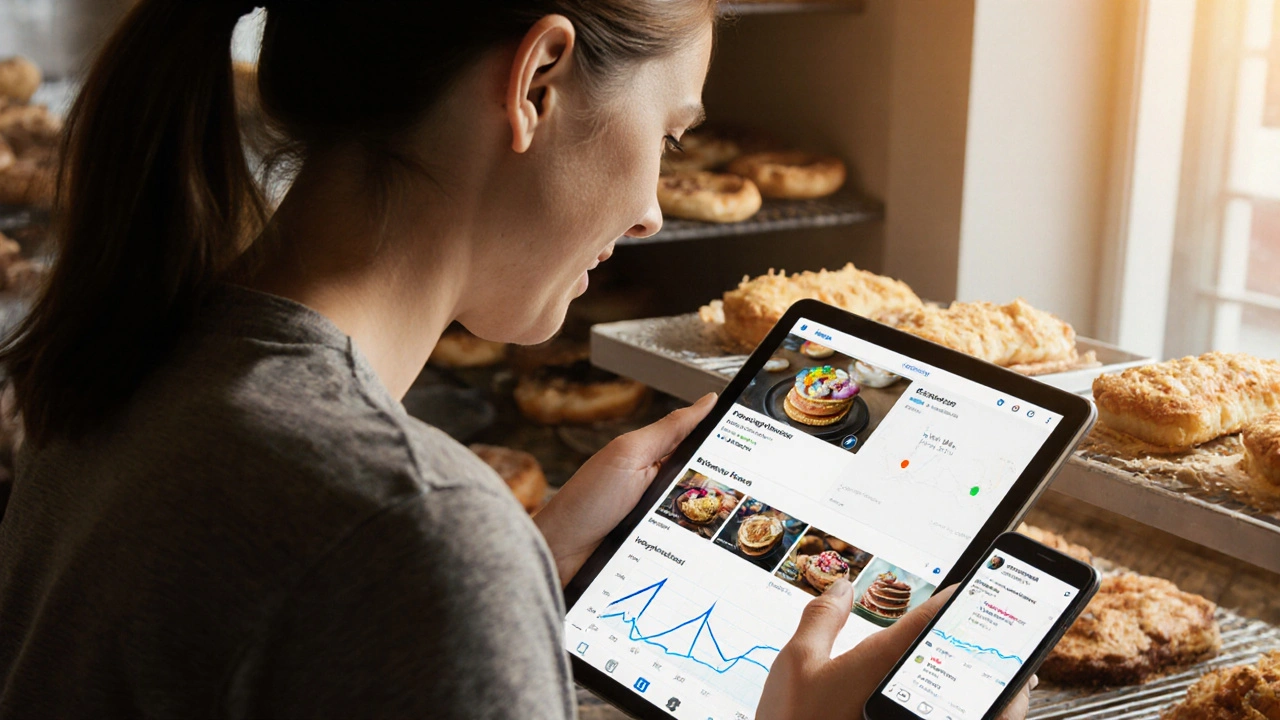If you’re not using digital marketing to grow your business, you’re leaving money on the table. Right now, over 5.3 billion people are online. That’s two-thirds of the world’s population. If your customers are online-and they are-you need to be there too. Digital marketing isn’t just about posting on Instagram or running Google Ads. It’s a system. A set of tools that work together to find the right people, talk to them in a way they care about, and turn them into customers. And it’s not as complicated as you think.
Know Where Your Customers Are
You can’t market to everyone. That’s the biggest mistake small businesses make. Trying to be everywhere at once means you end up being noticed nowhere. Start by asking: where do your ideal customers spend their time?Are they scrolling through TikTok during lunch? Checking LinkedIn for industry news? Searching for solutions on Google at 2 a.m.? Each platform serves a different purpose. TikTok works for visual, fast-moving products-think fashion, beauty, or gadgets. LinkedIn is where B2B buyers research software, services, or consultants. Google searches are intent-driven: someone typing "best CRM for small business" is ready to buy.
Use free tools like Google Analytics and Meta Business Suite to see where your traffic comes from. If 70% of your website visitors come from Instagram, don’t waste time on Pinterest. Double down on what’s working. One client of mine, a local bakery, saw sales jump 140% in six months after they stopped posting on Facebook and started posting short recipe videos on Reels. Their customers weren’t on Facebook-they were on their phones, looking for quick dessert ideas.
Build a Simple, Consistent Message
Your message doesn’t need to be fancy. It just needs to be clear. What problem do you solve? Who do you help? Why should they care?Think of it like a elevator pitch. You have 10 seconds. Say it out loud: "We help small restaurants cut food waste by 40% using smart inventory software." That’s it. No jargon. No buzzwords. Just value.
Now repeat that message everywhere. Your website headline. Your Instagram bio. Your Google Ads. Your email signature. When your message is consistent, people start to recognize you-even if they don’t remember your name. They remember the problem you solve.
One company selling eco-friendly packaging kept changing their tagline: "Green Solutions," "Sustainable Wraps," "Packaging That Cares." Confused customers. After they settled on "Packaging that doesn’t trash the planet," their conversion rate jumped 22%. Simple. Clear. Memorable.
Use Content That Actually Converts
Content isn’t just blogs and videos. It’s anything that answers a question your customer has. Every piece of content should have one goal: move someone closer to buying.Forget "10 Tips for Better Marketing." That’s fluffy. Instead, create content like:
- "How we helped a local plumber double his leads in 30 days with Google Local Service Ads"
- "The 3 mistakes most e-commerce stores make on their product pages (and how to fix them)"
- "Free template: 7-day email sequence to turn leads into paying customers"
These aren’t just posts. They’re lead magnets. They solve a real problem. And they give you permission to ask for something in return-like an email address. That’s how you build a list. And a list is your most valuable asset. You can’t buy one. You have to earn it.
One fitness coach started offering a free 5-minute mobility routine in exchange for emails. Within three months, she had 8,000 subscribers. She didn’t sell a single class yet. But when she did, 37% of those subscribers bought. That’s the power of trust built through useful content.

Run Ads That Actually Work
Ads aren’t magic. They’re math. You spend money to get attention. Then you turn that attention into sales. The key is targeting and tracking.Facebook and Instagram ads let you target people based on interests, behaviors, and even life events. Want to reach new homeowners? Target people who recently liked pages about interior design or moved to a new city. Want to find people ready to buy? Retarget those who visited your pricing page but didn’t check out.
Start small. Spend $5 a day on one ad. Test two versions: one with a photo of your product, one with a short video. Run it for seven days. See which one gets more clicks and lower cost per click. Then double down. Don’t chase vanity metrics like likes or shares. Track what matters: cost per lead, cost per sale.
A local dentist spent $120 on a Facebook ad targeting people within 5 miles who searched for "tooth pain" in the last 30 days. The ad offered a free consultation. He got 17 new patients. That’s $7 per patient. His average treatment value? $450. That’s a 6,300% return on ad spend.
Track Everything-Even the Small Stuff
If you can’t measure it, you can’t improve it. This isn’t optional. It’s basic business.Set up Google Analytics on your website. Link it to your Google Ads and Facebook Pixel. Track where visitors come from, what pages they view, how long they stay, and what they do next. If someone lands on your homepage and leaves in 12 seconds, something’s wrong. If 60% of people who click your email link end up buying, that’s gold.
Use UTM parameters to tag every link you share. For example: yourwebsite.com/offer?utm_source=instagram&utm_medium=reel&utm_campaign=spring_sale. That way, you know exactly which post drove which sale. No guessing. No assumptions.
One online tutor tracked her Instagram stories and found that her "Day in the Life" reel brought in zero sign-ups. But her 15-second clip showing a student’s test score going from 58% to 89% brought in 47 new inquiries. She stopped making "inspirational" content and started showing results.

Automate the Repetitive Stuff
You don’t need to post every day. You don’t need to reply to every comment. You need systems.Use email automation to send welcome messages, follow-ups, and special offers without lifting a finger. Tools like Mailchimp, Klaviyo, or ConvertKit let you set up sequences that trigger based on behavior. If someone downloads your free guide, send them a case study three days later. If they don’t open it, send a different one a week later.
Use chatbots to answer common questions on your website. "What’s your pricing?" "Do you offer refunds?" "When do you ship?" Let a bot handle those. Free up your time for real conversations.
A home cleaning service automated their follow-up emails. After booking, customers got a confirmation, then a reminder two days before, then a thank-you with a review request. Their repeat customer rate jumped from 18% to 41% in four months. Automation didn’t replace them-it made them more personal.
Start Now, Even If It’s Small
You don’t need a big budget. You don’t need a team. You just need to start.Today, pick one channel. One platform. One message. One thing to track.
- If you’re a local business: claim your Google Business Profile. Add photos. Get five reviews.
- If you sell online: run a $5 Facebook ad to your best product page. See who clicks.
- If you offer services: write one blog post answering a question your clients always ask.
Do that one thing. Then do it again next week. Then add one more. Digital marketing isn’t about perfection. It’s about progress. The companies that win aren’t the ones with the biggest budgets. They’re the ones who showed up, listened, and kept adjusting.
Five years ago, a guy in Ohio started selling handmade dog collars on Etsy. He posted one photo a week on Instagram. He replied to every comment. He tracked which colors sold best. Today, he runs a $2.3 million business. He didn’t have a marketing degree. He just kept doing the next right thing.
Your turn. Pick one thing. Do it. Then do the next one.
Do I need to be on every social media platform?
No. Being everywhere means being unnoticed. Focus on one or two platforms where your customers actually are. A bakery might thrive on Instagram and TikTok. A B2B software company might only need LinkedIn and Google Search. Quality beats quantity every time.
How long does it take to see results from digital marketing?
It depends. Paid ads can bring in leads in days. Organic content like blogs and SEO takes 3-6 months to build momentum. But the key is consistency. If you post once a month, you won’t see results. If you post once a week for six months, you will. Digital marketing is a marathon, not a sprint.
Is digital marketing cheaper than traditional advertising?
Usually, yes. A TV ad can cost $5,000 just to air once. A targeted Facebook ad can reach the same number of people for under $50. Plus, you can track exactly who saw it and what they did. With traditional ads, you’re guessing. With digital, you know.
What’s the most important metric in digital marketing?
Customer acquisition cost (CAC) and return on ad spend (ROAS). If you spend $100 to get a customer who spends $500, you’re winning. If you spend $100 and get a customer who spends $40, you’re losing. Track these numbers religiously. Everything else-likes, shares, followers-is noise.
Can I do digital marketing myself?
Absolutely. You don’t need to be a tech expert. Start with free tools: Google Analytics, Canva for graphics, Mailchimp for email, Meta Business Suite for ads. Learn one thing at a time. Most successful small business owners started alone. They didn’t wait until they knew everything. They just started.
Want to go further? Look into SEO basics, email list building, or retargeting ads. These are the next steps after you’ve got your first few customers. But don’t rush. Master one thing before adding another. Digital marketing grows with you.


I'm a Marketing Expert with over a decade of experience in the industry. I specialise mainly in online marketing and have worked with numerous global brands to elevate their online presence, build their brand image, and increase their sales. My passion lies in creating meaningful and engaging campaigns that truly resonate with audiences. In my spare time, I enjoy sharing my knowledge and experiences through my blog where I primarily write about the latest trends and tricks in online marketing.